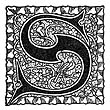Antiques-Collectibles > Rugs > Design > Textile & Costume
Description
by Walter A. HawleyWITH ELEVEN FULL-PAGE PLATES IN COLOUR
EIGHTY HALF-TONE ENGRAVINGS
AND FOUR MAPS
PREFACE  INCE the appearance, in 1900, of the excellent work of Mr. John Kimberly Mumford on Oriental Rugs, the public interest in these fabrics has so largely increased that the author feels warranted in offering this monograph, which aims to treat the subject in a way that will not only appeal to the general reader but be of value to the student. INCE the appearance, in 1900, of the excellent work of Mr. John Kimberly Mumford on Oriental Rugs, the public interest in these fabrics has so largely increased that the author feels warranted in offering this monograph, which aims to treat the subject in a way that will not only appeal to the general reader but be of value to the student. |
In the chapter entitled “Rug Weaving Before the XVIII Century” is a brief review of some of the notable achievements in this branch of art; and in order that the public may as far as possible have access to the masterpieces described, the carpets on exhibition in the Metropolitan Museum of Art in New York have been given unusual prominence. The chapters on “How to Distinguish Rugs” and on “Purchasing Rugs” should prove serviceable to those who are collecting or are buying for use; and the chapter on “Weaving” contains many details which have not previously received from connoisseurs the consideration they deserve.
The descriptions of all but the least important classes of rugs in the Persian, Asia Minor, Caucasian, and Central Asiatic groups include not only a general statement of their most striking features, but also a technical analysis that is termed “Type Characteristics.” It should be understood, however, that these characteristics are not invariable, but are remarkably constant. They may interest chiefly those who aim to acquire expert information, yet they will doubtlessly prove valuable to every owner of a rug as a means for its identification.
It would be difficult to acknowledge all the assistance received by the author since he began the study of rugs; for sometimes a mere suggestion has started a line of investigation resulting in interesting discoveries. He has freely consulted well-known authorities, who are quoted in the body of the work; and has received valuable suggestions and assistance from Messrs. T. S. Hawley, of Santa Barbara, Cal., George Harootunian and Frank Loftus, ofvi Los Angeles, Cal.; George Stevenson, of New York; G. Graf, of the Persische Teppiche Gesellschaft, of Tabriz; and P. de Andrea & Co., of Constantinople. He gratefully acknowledges the permission of Messrs. C. F. Williams, of Norristown, Penn., and James F. Ballard, of St. Louis, Mo., to study their valuable collections; and the permission of Dr. Wilhelm R. Valentiner, Curator of Decorative Arts in the Metropolitan Museum in New York, to examine the carpets of the museum and to take photographs of them. He also wishes particularly to mention the kindness of the following collectors and firms who have allowed their rugs to be used for illustrations: Miss Emily Davis, of Buffalo, N. Y.; the Misses Palache, and Messrs. Nathan Bentz and T. S. Hawley, of Santa Barbara, Cal.; Mr. R. Y. Struble, of Fredericktown, Ohio; Mr. E. L. Pierce, of Syracuse, N.Y.; Mr. H. C. Merritt, of Pasadena, Cal.; Mr. J. F. Ballard, of St. Louis, Mo.; Mr. C. F. Williams, of Norristown, Penn.; Major L. B. Lawton, U.S.A., of Seneca Falls, N.Y.; Messrs. Mihran & Co., of Los Angeles, Cal.; Messrs. B. Altman & Co., Benguiat & Keresey, Wm. Baumgarten & Co., Jones & Brindisi, Jos. Wild & Co., W. & J. Sloane, and the Tiffany Studios, of New York City. He is also indebted to Vincent Robinson & Co., Ltd., of London, for the use of the colour plate of the Royal Garden Carpet, now owned by them, and to the Royal Victoria and Albert Museum, South Kensington, London, for permission to obtain a colour plate of the Holy Carpet of the Mosque of Ardebil.
Walter A. Hawley.
New York, June, 1913.







 "
"






 6:45 PM
6:45 PM
 BookNet
BookNet


 Posted in:
Posted in: 












0 ความคิดเห็น:
Post a Comment